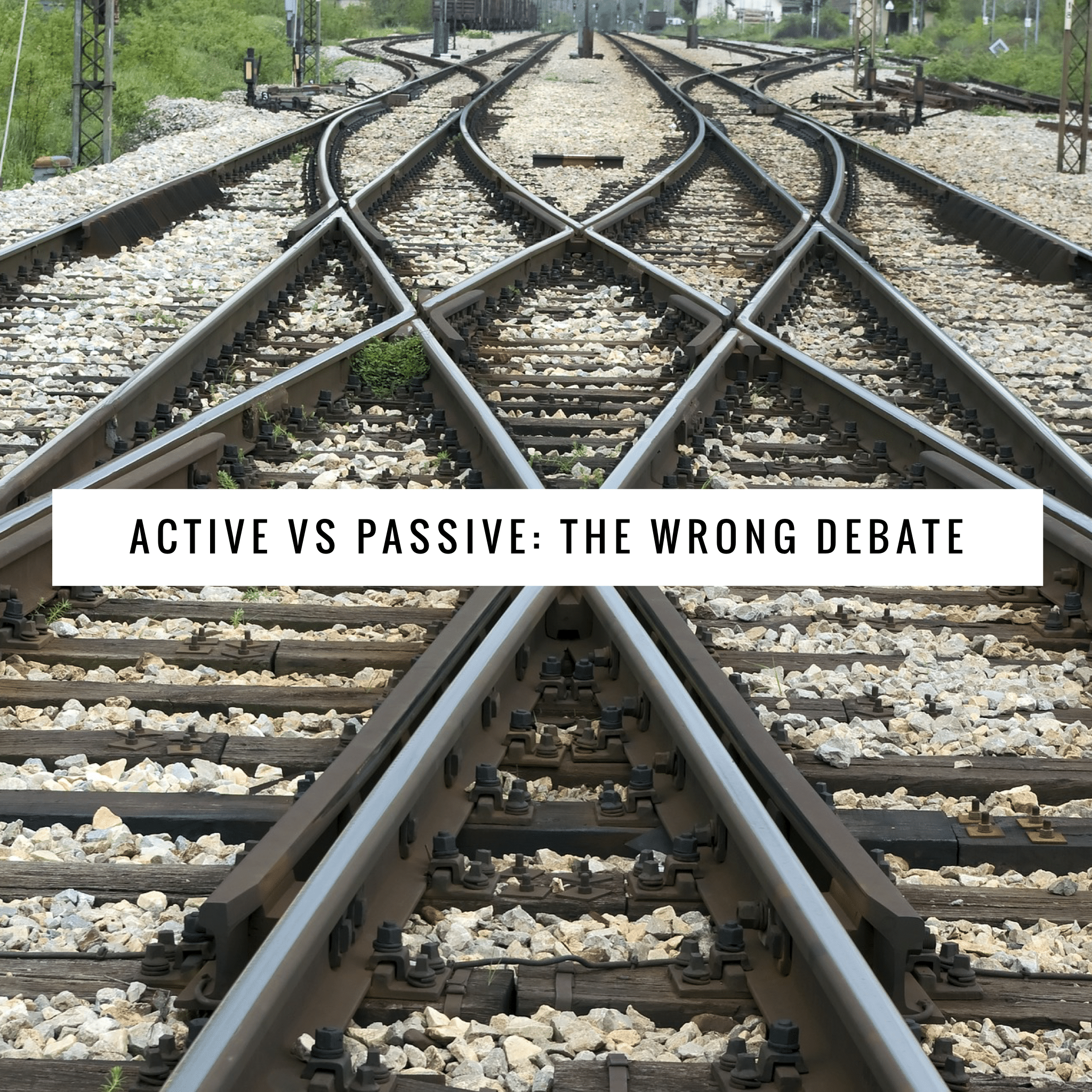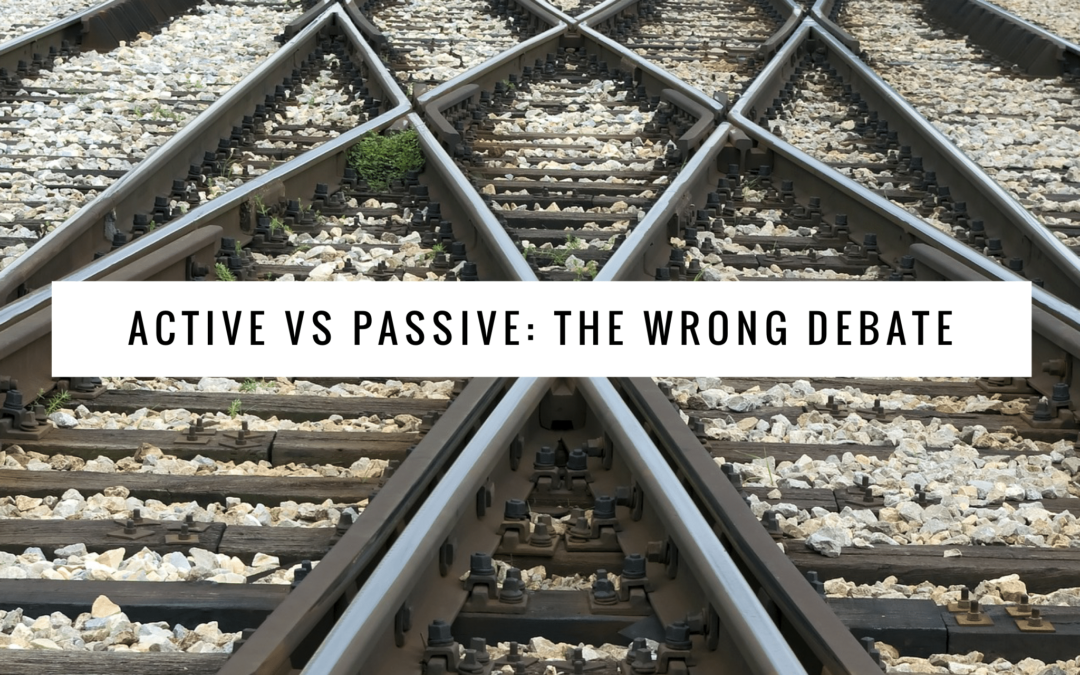
Are you an active or passive investor?
This question gained prevalence in the last decade among investors and frequently invokes furious debate among financial professionals. The S&P Indices Versus Active (SPIVA) Scorecard serves as a de facto measure of who’s “winning,” and has continually shown that actively managed funds don’t consistently beat the indices.
Active Loses Again
The most recent release shows more than 84% of all U.S. Equity Funds trailed their respective benchmarks over 15-year periods.
(The reason for using a 15-year period is to capture a full business cycle, but the results are equally dismal over one, three, five, and ten-year periods.)
International Equity Funds didn’t fare any better, with failure rates over a 15-year period ranging from 83% to 95% across the different subcategories. Fixed Income Funds also struggled, with failure rates ranging between 70% and 90% over a 15-year period across the different subcategories.
The Winners Don’t Keep Winning
For those funds that do manage to outperform, history suggests they are unlikely to do so in the future. The latest S&P Persistence Scorecard released in June 2017 showed most active managers that outperformed over a three- or five-year period fared much worse in the following three- or five-year period.
For example, among the top performing quartile of U.S equity mutual funds over a five-year period ending in 2012, 48% of those funds ended up in the bottom half of performers over the next five years while another 11% had to merge or liquidate. These results are in line with past years of the Persistence Scorecard.
There will always be active managers that outperform the overall market, but it is extremely unlikely that any one person will identify managers that outperform in advance and consistently pick the best active manager for any given asset class. The latter point is extremely important because the odds of your portfolio outperforming get progressively smaller as the number of funds in the portfolio increase.
You might conclude from this evidence that investors should only use index funds, which is far from being a bad conclusion, but also somewhat misses the mark.
Why Active or Passive is the Wrong Question
As I wrote earlier this year in The Wall Street Journal, the active versus passive debate is flawed because you can be highly active using index funds and very passive using active funds.
The most passive investor who never makes changes to their portfolio or process still must make a series of active decisions at the onset of building a portfolio including asset allocation, investment vehicles, asset location, and rebalancing rules.
Even the act of doing nothing counts as a decision.
What Investors Should Focus on Instead
The real comparison should be low-cost versus high-cost, low-turnover versus high-turnover, and rules-based versus forecast-based approach. When you fall on the right side of these comparisons, you position yourself for better investment results.
Traditional active managers tend to be on the wrong end of these comparisons, while index funds are usually on the favorable side. That partly explains why there’s so much focus on “active versus passive,” but simplifying it to this leaves out a lot of important details. Here’s how these factors can impact you as an investor.
1. Low cost vs high cost
The importance of low investment costs was first highlighted by Nobel Laureate William Sharpe’s 1966 work on mutual fund performance, with several studies since identifying a close link between cost and performance.
The higher fees that come with actively managed funds is well documented, but those fees are taken directly out of performance on a daily basis so you may never see them. The impact is simple: the more you pay, the less you have in the end.
2. Low turnover vs high turnover
Equity funds with low turnover also have a distinct advantage over equity funds with high turnover. Turnover measures the frequency in which securities are traded over a 12-month period and serves as a good proxy for trading costs within equity funds.
Active managers tend to trade more frequently in attempt to add value, but trading costs related to brokerage fees, bid-ask spreads, and price impact can dramatically reduce a fund’s performance. Evidence strongly suggests that equity funds with high turnover have lower rates of outperformance (turnover is less useful metric with fixed income funds).
3. Rules-based vs forecast-based
Most active managers attempt to identify mispriced securities or correctly time market movements. Markets are complex adaptive systems, which makes predicting market movements nearly impossible. In addition, the ultra-high competition for capturing profits doesn’t leave much opportunity for outperformance to go around.
On the other hand, a rules-based approach doesn’t make predictions about the direction of markets. It simply rebalances on a regular basis and allocates dollars according to the underlying methodology.
Other Considerations
Index funds are one of the greatest financial innovations for investors, but they aren’t perfect. Index funds have shortcomings primarily related to price inefficiencies associated with annual index reconstitution, as well as style and size drift during the calendar year.
Similarly, there are funds that actively deviate from an index in such a way that it ends up on the favorable side of these comparisons. These funds emphasize areas of the market that have been identified by academia to deliver higher expected returns over time by weighting according to relative valuation, size, profitability, or momentum.
With the distinction between active versus passive becoming less informative, investors must seek out information on more relevant characteristics when evaluating investments.














